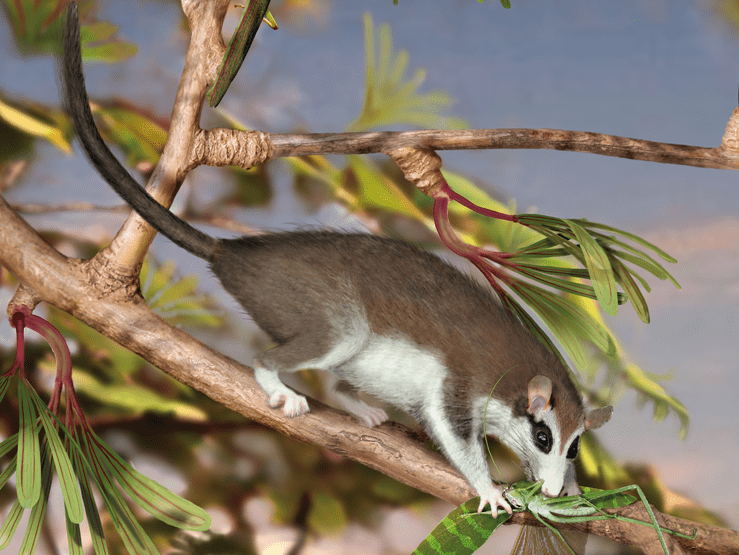The rise of Eomaia scansoria, an early placental mammal, marks a definitive leap towards “Complex Sentience” in the evolutionary saga leading to humans. Unearthed from the Early Cretaceous period, Eomaia’s sophisticated array of mammalian features heralds the advent of deeply emotional and social behaviors. Possessing a brain and nervous system capable of supporting complex emotions, Eomaia represents a lineage increasingly equipped for the nuanced experiences of joy, suffering, pleasure, and pain. This small, shrew-like creature’s life history likely involved care for its young, suggesting the presence of emotional bonds and a capacity for emotional experiences that go beyond mere survival instincts. As one of the earliest examples in the mammalian lineage, Eomaia embodies the evolutionary moment when our ancestors began to navigate the world not just physically but emotionally, setting the stage for the rich tapestry of sentient experiences that characterize human life and our closest animal relatives today.
Likely Proto Self-aware: It’s plausible that it possessed a foundational level of self-awareness, or what can be termed as Proto Self-awareness. This rudimentary sense of self would not meet the criteria for self-recognition observed in modern species but likely included basic self-directed behaviors and an emerging sense of individuality advantageous for survival and social interactions. The cognitive capacities of its descendants suggest that the earliest forms of these traits, essential for navigating complex environments and social dynamics, began to develop around this pivotal point in mammalian evolution.











